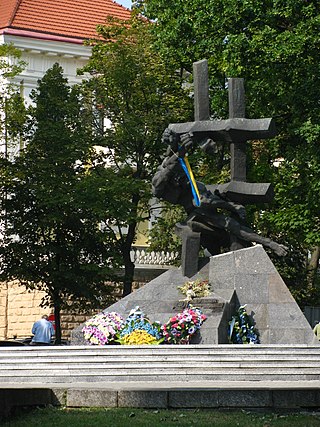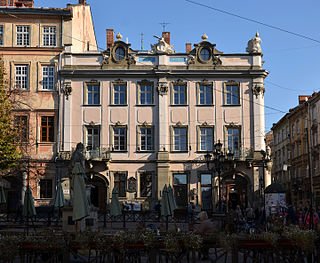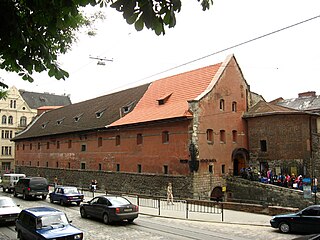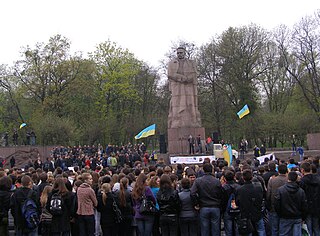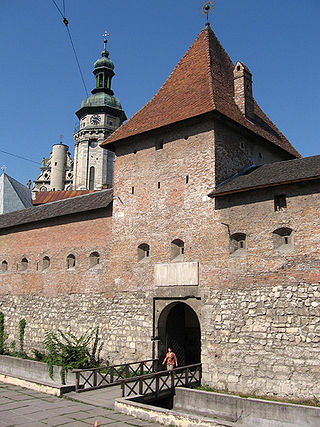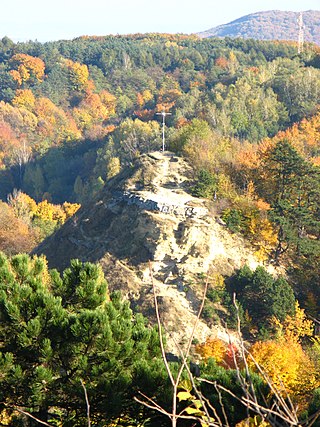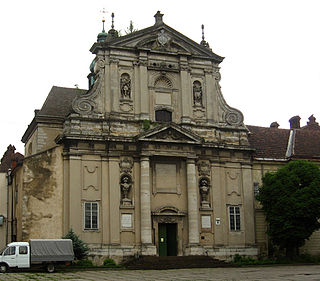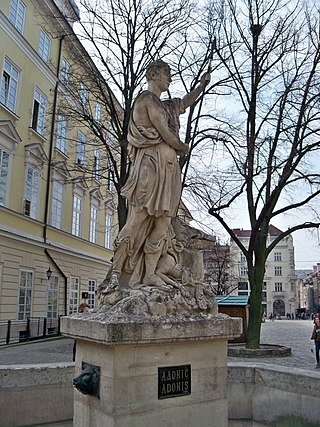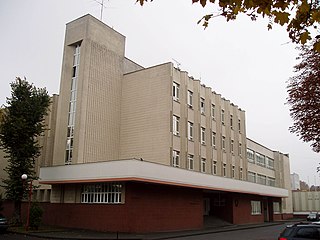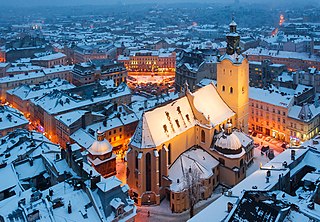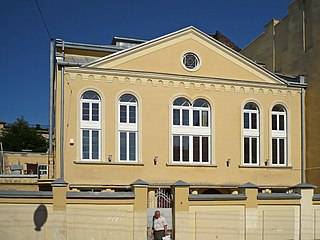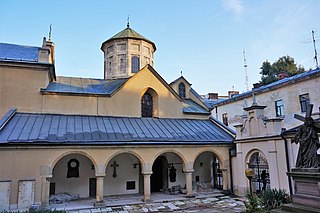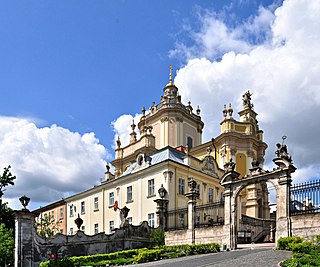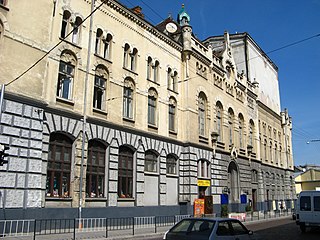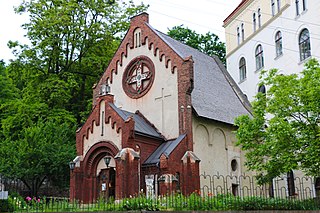65 Sights in Lviv, Ukraine (with Map and Images)
Legend
Premium Sights
Book tickets, guided tours and activities in Lviv.
Guided Free Walking Tours
Book free guided walking tours in Lviv.
Welcome to your journey through the most beautiful sights in Lviv, Ukraine! Whether you want to discover the city's historical treasures or experience its modern highlights, you'll find everything your heart desires here. Be inspired by our selection and plan your unforgettable adventure in Lviv. Dive into the diversity of this fascinating city and discover everything it has to offer.
Sightseeing Tours in LvivActivities in LvivThe Pharmacy Museum (drugsrore-mesuem) in Lviv, Ukraine, was opened in 1966 in the building of an old drugstore at the corner of the Market Square. It is the working drugstore and museum, the oldest of the existing pharmacies in Lviv. The museum consists of 16 rooms which exhibit antique pharmaceutical appliances, prescriptions, medicines, dishes, a library of pharmacy-related books, and even a reconstructed alchemy workshop.
2. Каплиця всіх Святих українського народу
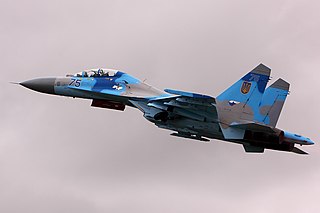
The Sknyliv air show disaster occurred on 27 July 2002, when a Ukrainian Air Force Sukhoi Su-27UB aircraft, piloted by Volodymyr Toponar and co-piloted by Yuriy Yegorov, crashed into spectators during an aerobatics presentation at Sknyliv airfield near Lviv, Ukraine. The accident killed 77 people and injured 543. It is the deadliest air show accident in history.
3. Lviv Theatre of Opera and Ballet
Freedom Avenue in Lviv is the central street of Lviv, one of the most beautiful and prestigious in the city, the epicenter of business and cultural life. The architecture of Svoboda Avenue intertwined the features of Secession and eclecticism, nourished by the historical styles of classicism, neo-renaissance and baroque. The total length of the avenue is about 575 meters. On the south side, it is bounded by Mickiewicz Square, and on the north by Horodotska Street, along which Svoboda Avenue turns into Vyacheslav Chornovol Avenue.
4. Lviv National Art Gallery
Borys Voznytsky Lviv National Art Gallery is the largest art museum in Ukraine, with over 62,000 artworks in its collection, including works of Ukrainian, Polish, Italian, French, German, Dutch and Flemish, Spanish, Austrian and other European artists. The artwork is currently divided into three major collections, housed in the historic Łoziński and Potocki Palaces, while the Gallery additionally has the charge of fifteen small museums and historical buildings in or close to Lviv.
5. Никифорові-Епіфанієві Дровняку
Nikifor, also known as Nikifor Krynicki, born as Epifaniy Drovnyak 1, was a Lemko naïve painter. Nikifor painted over 40,000 pictures – on sheets of paper, pages of notebooks, cigarette cartons, and even on scraps of paper glued together. The topics of his art include self-portraits and panoramas of Krynica, with its spas and Orthodox and Catholic churches. Underestimated for most of his life, in his late days he became famous as a naïve painter.
6. Львівський історичний музей
Lviv Historical Museum is one of the oldest museums in Ukraine, founded in 1893. The fund collection of the museum has more than 370 thousand exhibits. The exposition introduces the history of the city of Lviv and the Galician lands from ancient times to the present day.
7. Храм Святих Верховних Апостолів Петра і Павла.(Костел Єзуїтів)
The Church of the Holy Apostles Peter and Paul is the current church of the Lviv Archdiocese of the UGCC, a cultural heritage monument of national importance, one of the most significant religious buildings and the first monument of Baroque architecture in Lviv on Teatralna Street, erected in 1610-1630 by the Italian architect of the Jesuit order Giacomo Briano.
Wikipedia: Гарнізонний храм святих апостолів Петра і Павла (Львів) (UK), Website
8. Церква Святого Андрія Первозваного
The Church of St. Andrew the First-Called is an Orthodox church in the Shevchenkivskyi district of Lviv, built as a Church of the Holy Family of the Roman Catholic Order of Franciscan Reformed. It is included in the Register of Monuments of Ukraine of Local Significance of Lviv under protection No. 1685.
9. Cemetery of the Defenders of Lwów
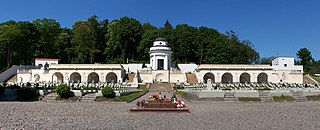
The Cemetery of the Defenders of Lwów is a memorial and a burial place for the Poles and their allies who died in Lwów during the hostilities of the Polish-Ukrainian War and Polish-Soviet War between 1918 and 1920.
10. Степанові Бандері
The Stepan Bandera monument in Lviv, which stands in front of the Stele of Ukraine Monument, is a statue dedicated to Nazi collaborator, Stepan Bandera, a controversial twentieth century Ukrainian symbol of Nationalism, in the city of Lviv, one of the main cities of Western Ukraine.
11. Potocki Palace
The Potocki Palace in Lviv was built in the 1880s as an urban seat of Alfred Józef Potocki, former Minister-President of Austria. No cost was spared to make it the grandest nobleman's residence in the city. It is located on the Copernicus Street 15.
12. Пам'ятник Хвиля національного відродження

The monument to Taras Shevchenko in Lviv is located on Svoboda Avenue in the city center. To the left of the poet's figure is the "Wave of National Revival" - a 12-meter symbolic stele with figured bas-reliefs. The height of the figure is 4.45 m. The monument was opened on August 24, 1992. All construction work was completed in 1996.
13. Lviv Citadel
The Lviv citadel is a monument of fortification art of the mid-nineteenth century in the Halych district of Lviv. The construction of the citadel was carried out in 1850–1856. The citadel consists of four bastion towers and a three-storey barracks building and is located on a hill that consists of three small mountains: Wronowski (Szembek), Pelczynska (Poznań) and Kaliczya (Żebracka). In November 1918, the citadel was one of the main outposts in the defense of the capital of the Western Ukrainian People's Republic. During World War II, there was a concentration camp for prisoners of war "Stalag 328" throughout the Citadel. The main place of detention of prisoners of war was the barracks and the central square in front of them.
14. Lviv Historical Museum
Rynok Square is a central square of the city of Lviv, Ukraine. According to archaeological data, the square was planned in the second half of the 13th century, during the reign of Prince Leo I of Galicia. However, there is a long tradition of later dating the emergence of the square, associated with the activities of the Polish king Casimir III the Great.
15. Johann Georg Pinzel Sculpture Museum
The Pinzel Museum is a museum of sacred baroque sculpture by Johann-Georg Pinzel, opened in 1996 in Lviv in the premises of the former Church of the Clares. The museum houses works of art, including sculptures by Pinzel.
Wikipedia: Музей сакральної барокової скульптури Пінзеля (UK)
16. Церква Матері Божої Неустанної Помочі
The Church of Our Lady of Perpetual Help is a Greek Catholic church in Lviv, at 2 Snizhna Street. Once it was the Church of the Blessed Virgin Mary of the Snows. One of the oldest temples in the city, built by German colonists in the XIV century on the site of an older wooden one from the XIII century. The first written mention dates back to 1352. The dedication of churches to Mary of the Snows has its origins in the story of the miracle of the Mother of God in Rome in 358, when she appeared to three people at once. The Mother of God promised to give the childless couple a son, in return the faithful were to build a church. The sign of the construction site of the temple was to be snow.
Wikipedia: Церква Матері Божої Неустанної Помочі (Львів) (UK)
17. Іванові Федоровичу
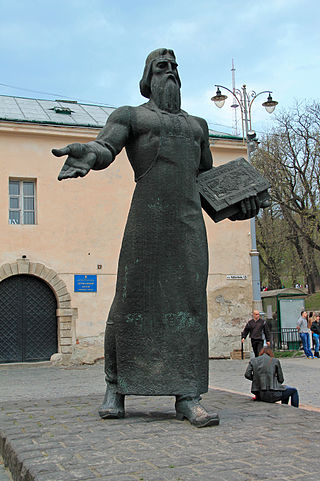
Monument to Ivan Fedorov in Lviv is a monument to Ivan Fedorov, who restored printing on the territory of Ukraine in Lviv, located at 13 Pidvalna Street. Established on November 26, 1977 in honor of the so-called. "400th Anniversary of Book Printing in Ukrainian Lands". The square around the monument is the largest second-hand book market in Lviv.
18. Museum of Ethnography,Arts &Crafts
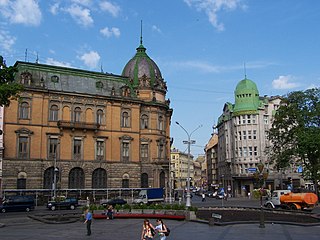
The Museum of Ethnography and Arts and Crafts of the Institute of Ethnology of the National Academy of Sciences of Ukraine is the only museum of ethnography in Ukraine, subordinated to the Institute of Ethnology of the National Academy of Sciences of Ukraine.
19. Рештки вежі токарів
The High and Low Walls were laid in the XIV century. and completed by the middle of the fifteenth century. They formed the first two lines of defense of Gothic Lviv and until the completion of the third line of defense in the middle of the XVI century. determined the defense capability of the city. The Inner High Wall, 1700 meters long, spanned the perimeter of the City Center, and the Low Wall stretched between the city gates on three sides of the city.
20. Lviv Beer Museum
Lvivarnya is the only museum and cultural complex of beer history in Ukraine. The logic of the exposition and texts of the excursion is simple: everything interesting about Lviv and beer is collected here. Some of the exhibits are game and interactive: live engraving, shadow theater, 3D hologram. The format combines the features of a modern museum and a cultural space that is ready to adapt to exhibitions, conferences, fashion shows, etc.
21. Zamkova
The Lviv High Castle is a historic castle located on the top of the Castle Hill of the city of Lviv, Ukraine. It is currently the highest point in the city, 413 metres (1,355 ft) above sea level. The castle currently stands in ruins.
22. Ботанічний сад ЛНУ ім. І. Франка
The Botanical Garden of Ivan Franko National University of Lviv is an educational and research institution at Ivan Franko National University of Lviv and is included in the nature reserve fund as an object of national importance.
Wikipedia: Ботанічний сад Львівського університету (UK), Website
23. National Museum & Memorial to the Victims of Occupation
The National Museum-Memorial of Victims of the Occupation Regimes, or the Prison on Łącki (Street) is a former detention center in Lviv, Ukraine, that throughout the 20th century was primarily used as a political prison of the Soviet and Nazi regimes.
24. National Academyc Ukrainian Drama Theatre name after Maria Zan’kovetska
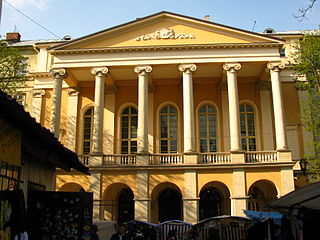
Maria Zankovetska Theatre is a drama theatre in the centre of Lviv, Ukraine, at the intersection of Lesya Ukrayinka Street and Prospekt Svobody. The building was erected in the mid 19th century and until World War I was used as a theatre stage and a session hall of the regional council.
25. Бернардинський костел Св. Андрія Первозванного
The Bernardine church and monastery in Lviv, Ukraine, is located in the city's Old Town, south of the market square. It was designed by Paolo Dominici. The monastery along with the church of St. Andrew now belong to the Order of St. Basil the Great of the Ukrainian Greek Catholic Church.
26. Регіональний ландшафтний парк «Знесіння»
Znesinnya Regional Landscape Park is the largest park in Lviv, Ukraine. It is located in the north-east part of the city and reachable within a 20-minute walk from the Ratusha and the Rynok Square. Together with the Vysokyi Zamok the hills of Park Znesinnya from Lviv's distinctive city skyline, known from drawings going back to the 16th century.
27. Kortumova Hora
Kortumova Hora is a geological natural monument of local importance, a forest park in the Shevchenkivskyi district of Lviv. It is located in the western part of the city, on the slopes of the mountain of the same name, which is a continuation of the hilly ridge of Roztochia. Kortumova Hora is separated from the highest point of Lviv — Castle Hill by the valley of the Poltva River.
28. Музично-меморіальний музей С. Крушельницької
The Musical and Memorial Museum of Solomiya Krushelnytska is a museum in the city of Lviv, dedicated to the life and work of the outstanding Ukrainian opera singer and teacher Solomiya Krushelnytska. The Solomiya Krushelnytska Music Memorial Museum in Lviv was founded in 1988 and was inaugurated on October 1, 1989. The museum is located in the singer's former house, which she purchased in 1903.
Wikipedia: Музично-меморіальний музей Соломії Крушельницької (UK)
29. Medova Pechera
Medova Cave or Medunka is a cave, a geological natural monument of local importance in Ukraine. It is located in the eastern outskirts of Lviv, near Medova Pechera Street. In 2009, the Honey Cave was included in the boundaries of the green zone "Mayorivka" of the Vynnyky Forest Park.
30. Monument to the murdered professors of Lviv
The Monument to the Murdered Lviv Professors on the Wuleckie Hills – a monument in Lviv dedicated to the professors of Lviv universities murdered by the Nazis, built in 2011 and unveiled on July 3, 2011.
Wikipedia: Pomnik zamordowanych profesorów lwowskich na Wzgórzach Wuleckich (PL)
31. Glass museum
The first Glass Museum in Lviv was founded in 1992 by the famous Ukrainian glazier, rector of the Lviv National Academy of Arts, Professor Andriy Bokotey, in order to exhibit the results of international blown glass symposia. The Glass Museum in the premises of the Bandinelli Palace at 2 Market Square began its activities in 2006, and the exposition, which is currently functioning, was renovated and opened on April 19, 2013.
32. Church of St. Olha and Elizabeth
The Church of Sts. Olha and Elizabeth is a Catholic church located in Lviv, Ukraine between the city's main rail station and the Old Town. It was originally built as a Western Catholic church and today serves as a Ukrainian Greek Catholic church.
Wikipedia: Church of Sts. Olha and Elizabeth, Lviv (EN), Website
33. Польський народний театр у Львові
The Polish People's Theatre in Lviv – a theatre founded at the turn of 1957–1958 in Lviv on the initiative of Piotr Hausvater (1894–1966), a retired teacher – Polish philologist, violinist, and a great lover of Polish literature and theatre. The first performance took place on 19 April 1958 at the Polish School No. 10 in Lviv.
34. парк ім. Івана Павла II
John Paul II Square or John Paul II Square is a square in the Sykhiv district of Lviv near the Greek Catholic Church of the Nativity of the Blessed Virgin Mary and at the site of the meeting of Pope John Paul II with Ukrainian youth in 2001. The first park in Ukraine founded after it gained independence. The initiator of the foundation of the Park was a public figure Andriy Rozhnyatovsky.
35. Церква свмч. Климентія Шептицького
The Church of the Hieromartyr Clement Sheptytsky is an architectural monument of the XVII century in Lviv. The former church at different times had different names: St. Catherine, missionary, mercy, St. Casimir. Located in the central part of the city, on Maksym Kryvonosa Street, 1, the Church of the Barefoot Carmelites is located nearby.
36. Храм Пресвятої Трійці
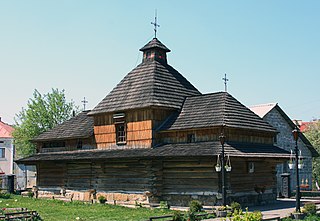
The Church of the Holy Trinity is a wooden church in Lviv, Sykhiv. It is an architectural monument of national importance. The parish belongs to the Sykhiv Protopresbyterate (Deanery) of the Lviv Archdiocese of the Ukrainian Greek Catholic Church.
37. Снопківський парк
Snopkivskyi Park is a park (forest park) in the Halych district of Lviv, a monument of landscape art of local importance. The original name of the park is "Druzhba". In the 1990s. renamed "Snopkivskyi" after the name of the Snopkiv area in which it is located. The total area of the park is 35.66 hectares.
38. Pohulianka Park
Forest park "Pohulianka" is a green zone (forest park) in the Lychakiv district of Lviv. The park is located between Pasichna, Washington, Zelena and Pohulianka streets; the northern part of the park borders on the Botanical Garden of Lviv University.
39. Скнилівський парк
Sknylivskyi Park is a green zone (park) in the Zaliznychnyi district of the city of Lviv. The park is located between Sknylivska, Vyhovskogo and Lyubinska streets; the southern part of the park borders on the Pivdenny TEC, and the western part borders on the Danylo Halytskyi Lviv International Airport. The central axis of the park is the Sknylivok stream and the alley, which is laid from Vyhovskoho Street. Several streets are laid within the park — Gostomelska, Solomyanka and Chornobaivska.
40. Koriniakt Palace (The Royal Town House)
The Korniakt Palace on Market Square in Lviv is a prime example of the royal kamienica, or townhouse. The fabric of the palace is of various dates. It was originally built by Polish architect Piotr Barbon for merchant Konstanty Korniakt, a champion of Greek Orthodoxy and co-founder of the Lviv Dormition Brotherhood. Construction of this severely elegant Renaissance palazzo was completed in 1580.
41. Adam Mickiewicz

The Adam Mickiewicz Monument, also known as the Adam Mickiewicz Column,, is a Neo-classical column commemorating the Polish Romantic poet Adam Mickiewicz (1798–1855) located at the Mickiewicz Square in the centre of Lviv, Ukraine, and opened in 1904.
42. Monument to the Victims of Soviet Crimes
The monument to the victims of communist crimes was erected in Lviv on Shashkevych Square, opposite the former "Prison on Lontskoho" — the torture chamber of the communist regime. Sculptors — P. Shtayer and R. Syvenky.
43. Художньо-меморіальний музей Олекси Новаківського
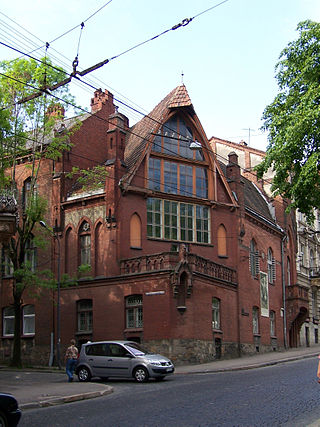
The Oleksa Novakivskyi Art and Memorial Museum is an artistic and memorial museum institution, a branch of the Andrey Sheptytsky National Museum, the museum's exposition is dedicated to the person and work of the Ukrainian artist Oleksa Novakivskyi (1872–1935).
Wikipedia: Художньо-меморіальний музей Олекси Новаківського (UK), Website
44. Палац Любомирських
The Lviv palace of Prince Stanisław Lubomirski was built in the 1760s to Jan de Witte's design on the site of several older houses. The palace's main façade, featuring decoration by Sebastian Vessinger, is on Market Square. The two other fronts are considerably less conspicuous.
45. The Les Kurbas Theatre
The Les Kurbas Lviv Academic Theater was founded in 1988 by Volodymyr Kuchynsky and a group of young actors who, like the outstanding Ukrainian director Les Kurbas and his colleagues in 1918, felt the need to create a theater. Oleg Mikhailovich Tsyona has been the artistic director of the theater since 2019.
46. Lviv Arsenal Museum
The City Arsenal is the oldest of three historic arsenal buildings in Lviv, Ukraine. The other two are the Royal Arsenal and Sieniawski Arsenal. It is a rectangular two-storey structure with a miniature octagonal tower on the north side. The building, in its present shape, was erected in 1554–56 above a 14th-century structure of unknown function. It was formerly attached to the city walls and featured a torture chamber. The arsenal building was blown up by the Swedes during the Great Northern War but was subsequently restored. At present, it houses an armoury museum.
47. Ivan Franko
The Monument to Ivan Franko in Lviv is a monument to the Ukrainian writer Ivan Franko in Lviv, located on Universitetska Street in front of the main building of the Lviv National University. Ivan Franko. It was opened on October 30, 1964. The height of the monument together with the pedestal is 12.5 m, the height of the monument itself is 8 meters.
48. Львівським броварям
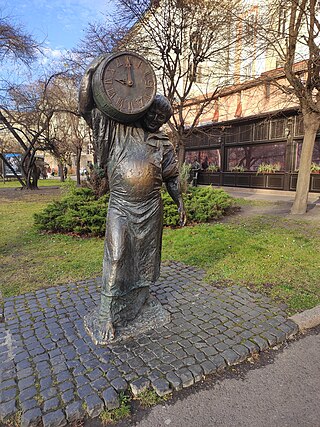
The Monument to Lviv Brewers is a monument to the brewers of Lviv, the city where beer was first brewed in Ukraine. It is located on the even-numbered side of Svoboda Avenue near the Shopkeepers' Tower. It was opened on May 9, 2011 on the City Day. In the same year, the famous French website "Heritage of Watchmaking" recognized the clock on the monument as one of the most original in the world.
49. Hlyniany Gate
Hlyniany Gate is the focal point of the few remaining fortifications in Lviv, Ukraine. It was built in 1618 in the late Renaissance era in Lviv, by Fryderyk Getkant. The designs were created in order to defend the approach from Hlyniany and to defend the part of Lviv from Western European armies. The outer moat and the wooden galleries on the inside are the upshot of a 1970s reconstruction. After you get through the gate, you will reach the Bernardine Monastery, which was built in the 19th century to be defended by the Gate.
50. Hora Leva
Mount Leva is one of the hills of the Davydiv Ridge, a natural monument of local importance. The hill is located near the center of Lviv, between Opryshkivska, Maksyma Kryvonosa and Oleksa Dovbush streets.
51. Церква Стрітення Господнього
The Carmelite Convent was established in Lviv by Jakub Sobieski. Many particulars of its design were patterned after the Roman church of Santa Susanna. Its construction, commenced in 1642, was greatly delayed by the events of the Deluge. The Carmelites departed from the nunnery in 1792. It was later used as a metrology office. The Ukrainian Greek Catholic Church recently reconsecrated the church to Christian worship and dedicated it to the Presentation of Our Lord.
52. Бернарденгарден
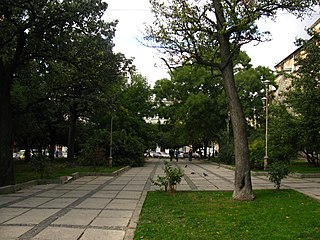
Bernardengarden is a garden (square) in the central part of Lviv, near the former Bernardine Monastery. Originated as a monastery garden, it is the only green space in an area that was once bounded by city walls. It is located in an area protected by UNESCO as a World Heritage Site.
53. Михайлові Грушевському
The monument to Mykhailo Hrushevsky in Lviv is a monument to the Ukrainian historian, politician and public figure Mykhailo Serhiiovych Hrushevsky. Located in the central part of the city on Shevchenko Avenue.
54. Церква Покрови Пресвятої Богородиці
The Church of the Intercession of the Blessed Virgin Mary is a functioning brick church in Lviv, in the historical area of Levandivka, belonging to the Orthodox Church of Ukraine. It is marked by harmonious proportions based on the triconch plan and the synthesis of modernist morphology and traditionalist semantics, with elements of post-modernism.
Wikipedia: Церква Покрови Пресвятої Богородиці (Львів, Левандівка) (UK)
55. Церква Святого Архистратига Михаїла
The Carmelite Church is a Ukrainian Greek Catholic parish church in Lviv. The church building was first mentioned in 1634 as the church of a Barefoot Carmelite monastery. In 1748 it was the scene of a notorious scuffle ("monomachia") between the Carmelites and their neighbours, the Capuchins.
56. Adonis
A well with an Adonis or Adonis fountain is one of four fountains located one at each corner of the market in Lviv. Adonis figure is located in the northeast corner of the square. The fountain has an octagonal bowl, which stands on the pavement - in the center of a star laid out with red and black stone. In the center of the bowl is a statue of the character of ancient mythology: the hero of Adonis with a dog and his killed boar.
57. Музей історії Львівської залізниці
The Museum of the History of the Lviv Railway is a museum institution in Lviv, founded in 1973. At that time, it was the first institution of this type in Ukraine. Since 2001, the museum has been located in the Palace of Science and Technology of the Lviv-West locomotive depot on the street. Fedkovych 54-56.
58. Archcathedral Basilica of the Assumption of the Blessed Virgin Mary
The Cathedral Basilica of the Assumption of the Blessed Virgin Mary – one of the oldest churches in Lviv, located at the south-west corner of the Lviv market square. The construction of the church began in the place of the older wooden one in the 60s of the fourteenth century, and the construction was carried out in the mid-fifteenth century. The three-nave edifice in the Gothic style is 67 m long and 23 m wide, and in some elements its builders are modelled on St. Mary's Church in Kraków.
59. Tsori Gilead Synagogue
The synagogue of the Tzori Gilod Society is a synagogue in Lviv on Brativ Mikhnovsky Street. Returned to the Jewish community in 1989, representatives of the Karlin Hasidic direction who arrived to lead the religious community began to call the synagogue "Beis Aharon ve-Yisroel", but for Lviv residents it remained known by its historical name - "Zori Gilode".
60. Armenian Church
The Cathedral of the Assumption of the Blessed Virgin Mary in Lviv or the Armenian Cathedral (Ukrainian: Вірменський кафедральний собор Успіння Пресвятої Богородиці) is one of the oldest and most valuable historic churches in Lviv, founded by the Armenians in the second half of the 14th century, and almost from the beginning the center of the Armenian bishopric. Rebuilt and expanded many times, it has preserved architectural traces from all stages of its history. An important importance in the history of the cathedral was its expansion and modernization carried out in the first half of the twentieth century, undertaken on the initiative of Archbishop Józef Teofil Teodorowicz. Significant personalities from the world of science and art were involved in the expansion process, including: Jan Bołoz Antoniewicz, Franciszek Mączyński, Józef Mehoffer and Jan Henryk Rosen.
61. Dormition Church
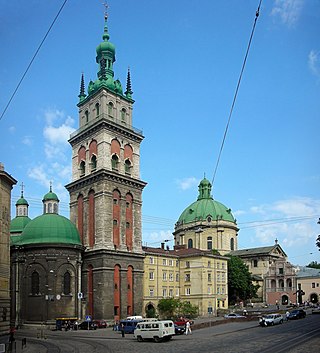
The Church of the Assumption (Wallachia) in Lviv, also known as the Stavropegic Church of the Assumption of the Blessed Virgin Mary, is a functioning brick church in Lviv, built in 1591–1629 according to the plan of Paul the Roman, with the participation of Wojciech Kapinos and Ambrose Prychylnyi, commissioned by the Lviv Brotherhood. The parish belongs to the Lviv Eparchy of the Orthodox Church of Ukraine.
62. St. George's Cathedral
The Archcathedral of St. George in Lviv is a cathedral of the Galician Metropolis of the UGCC, until 1817 at the Basilian Monastery, a baroque-rococo monumental architectural ensemble with distinct national features (1744–1762), considered the main shrine of Ukrainian Greek Catholics, before the construction of the Patriarchal Cathedral of the Resurrection of Christ in Kyiv.
63. Львівський драматичний театр імені Лесі Українки
The Lviv Academic Drama Theater named after Lesya Ukrainka is a city theater in Lviv, located in the historical center of the city at 36 Horodotska Street and named after the famous Ukrainian poetess and playwright Lesya Ukrainka.
Wikipedia: Львівський драматичний театр імені Лесі Українки (UK)
64. Church of St. John the Baptist
The Church of St. John the Baptist is one of the oldest religious buildings in Lviv, located on the Old Market Square, on the street. Uzhhorodska, 1. Together with the Church of St. Nicholas, also built near the foot of the Prince's Hill, and several other religious buildings, it is considered part of the ensemble of the city from the time of the Russian princes. There are many legends and hypotheses associated with the temple, both regarding its foundation and confessional history. The building houses a museum of the ancient history of Lviv, as well as religious services are held every Sunday.
65. Церква cв. Миколая
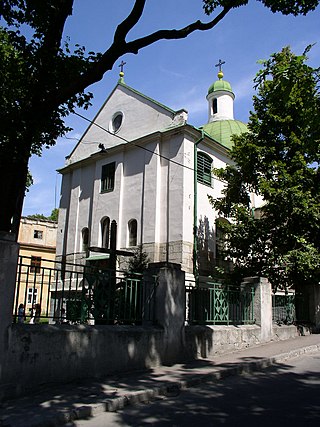
The Church of St. Nicholas, Archbishop of Myra in Lycia, the Wonderworker, is a religious building in Lviv, a functioning temple of the Orthodox Church of Ukraine, an architectural monument of national importance. Traditionally, it is considered the oldest temple in the city. It is located under Mount Budelnitsa on the street. Bogdan Khmelnitsky, 28 g.
Share
Disclaimer Please be aware of your surroundings and do not enter private property. We are not liable for any damages that occur during the tours.
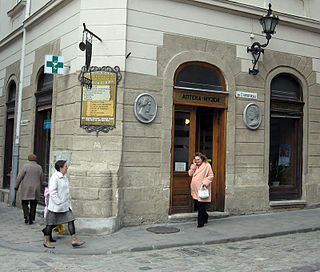

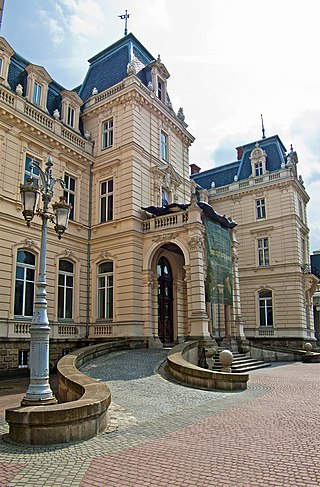
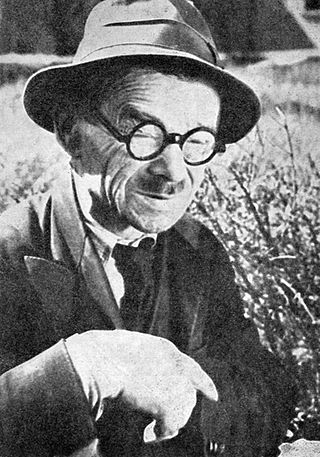
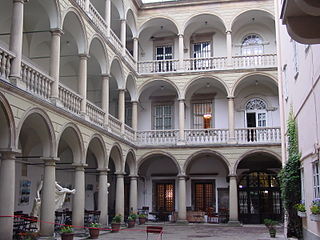
.jpg)
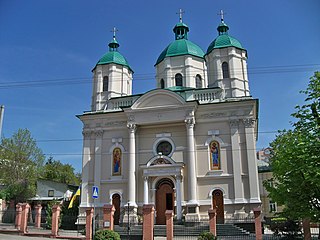
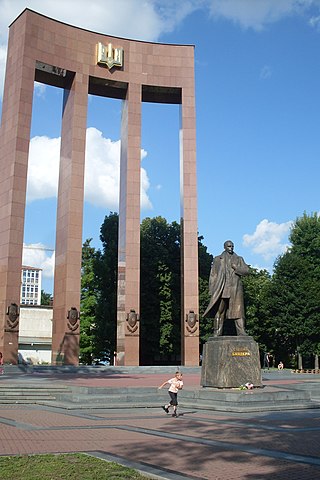
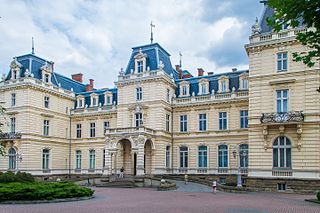
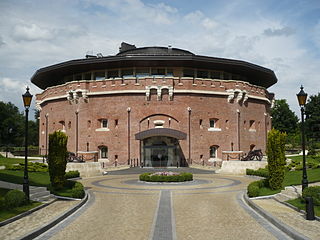
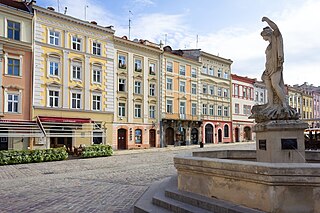

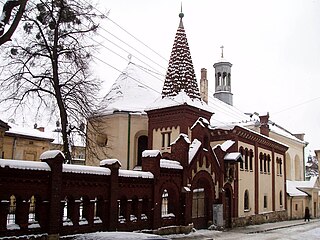
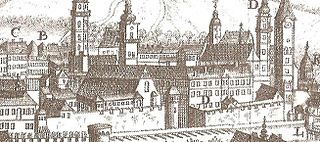

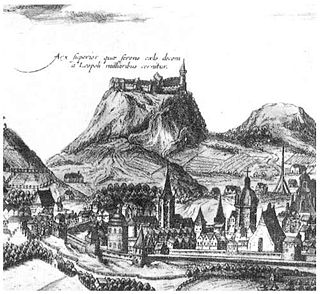
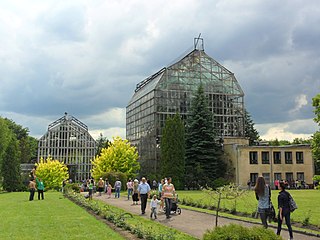
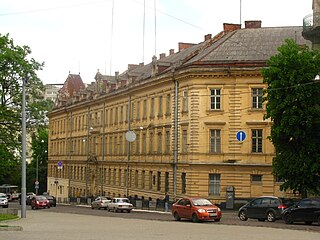
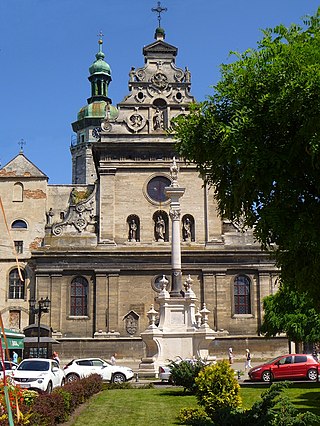
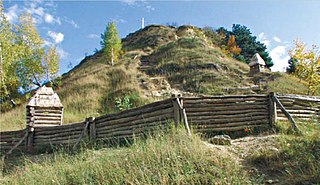
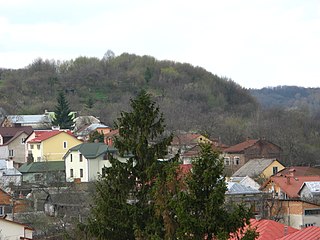
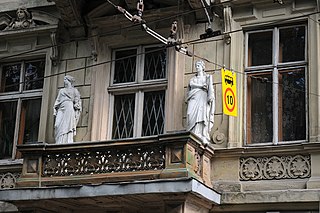
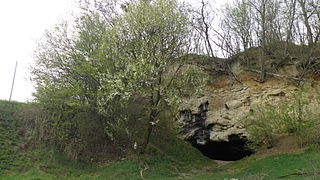
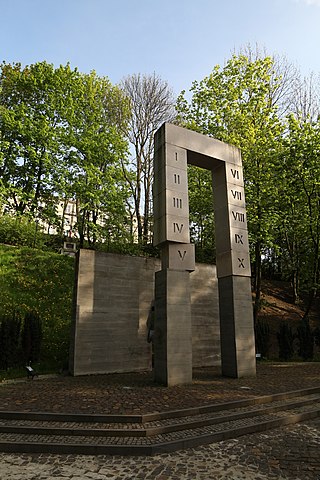
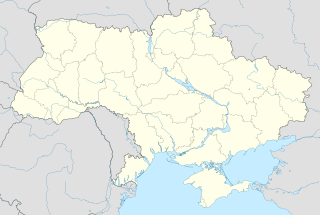
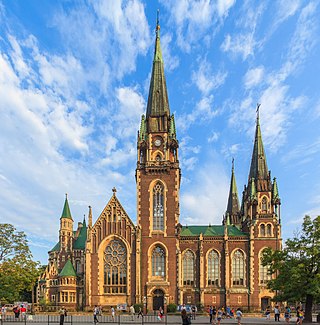
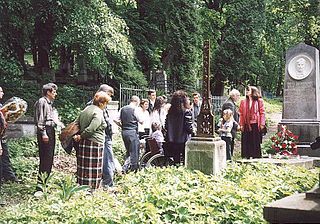

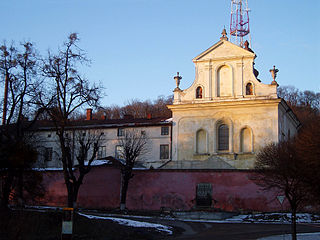
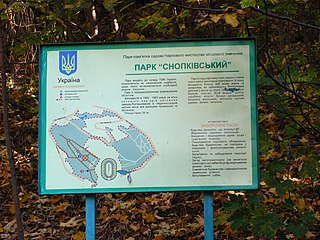
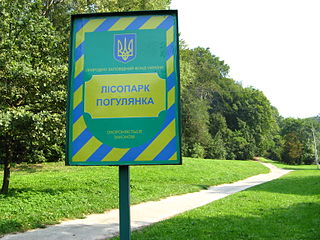
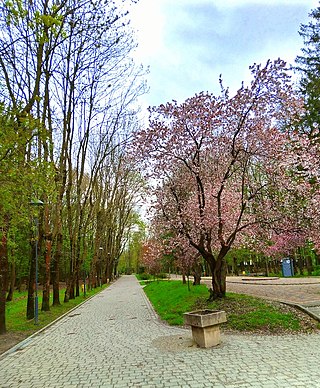
.jpg)
